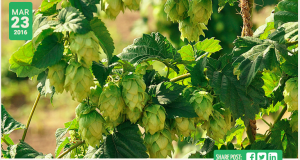By: Evan Elford – New Crop Specialist | OMAF/MRA | ONspecialtycrops | June 23, 2014
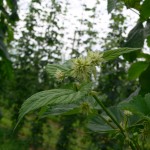
Firgure 1: Burr formation on Hallertauer hops in the University of Guelph Simcoe research hop yard (June 23, 2014)
Hop fertility applications should be ending within the next two weeks now that we are past the summer solstice (June 21). Keep an eye on plant growth stage in your region and terminate fertility applications once burrs (female inflorescence) are detected (Principle Growth Stage 5: Inflorescence emergence on the BBCH Scale, Figure 1).
Flowers are typically initiated by the plant within 7-14 days after the solstice as a response to the change in photoperiod (decreasing day length) . The hop plant will shift from vegetative growth to reproductive growth at this point in the season (Figure 2). No additional fertility applications should be required for the remainder of the growing season.
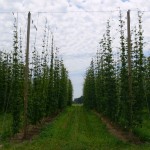
Figure 2: Vegetative growth of two year old hops in the University of Guelph research hop yard in Simcoe (June 23, 2014)
Irrigation, however, is essential at this same growth stage. Growth stages 5 through 7 (Inflorescence emergence to cone maturity) is a critical period for water use in hops (Figure 3). Studies have shown that supplemental irrigation can improve yield and quality of hops and may positively affect alpha acid concentrations. Most recommendations suggest 7.5 L of water per plant per day (~2 U.S. gal/plant/day) is adequate for plant growth, however , some more recent information on Evapotranspiration (ET) rates of hops suggest the plant may require even more water, up to 19 L/plant/day (~5 U.S. gal/plant/day) for optimal plant growth. Always remember to include rainfall amounts when calculating how much supplemental irrigation should be applied.
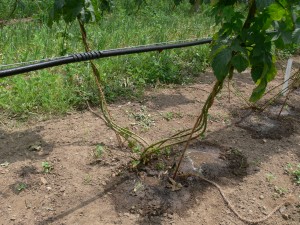
Figure 3: Drip irrigation is a common method used for irrigating hops. It is important to supply enough water to the hops at critical growth stages during the season to optimize yield and quality. Be sure to measure the amount of water released through the emitter over a set time and schedule your irrigation timing appropriately.
Agriculture and Agri-food Canada (AAFC) tracks precipitation amounts across the country and develops Accumulated Precipitation maps which are a useful resource to determine rainfall accumulation over the growing season for a particular growing area. Maps like the one in Figure 4 (Accumulated Precipitation, April 1 – June 16, 2014) give us the ‘big picture’ of rainfall amounts for the growing season. Although it appears there has been plenty of precipitation, one cannot base irrigation decisions on this long term chart. A much different and more applicable picture of rainfall status across the province can be seen in the 7 day average in Figure 5 (7 Day Accumulated Precipitation June 10-June 16, 2014) which may be useful when determining the amount of supplemental irrigation one should apply for the week.
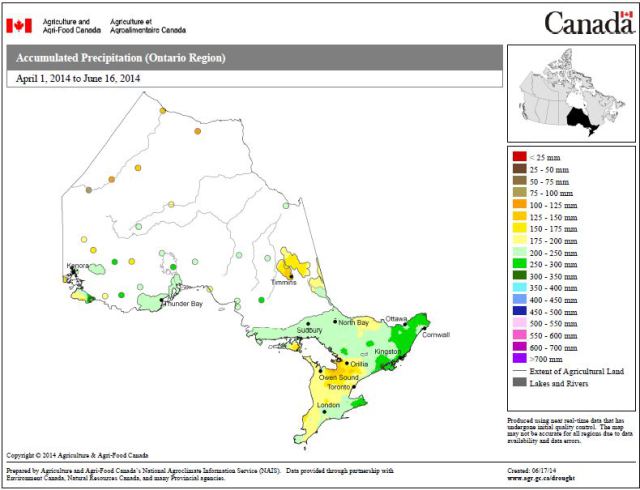
Figure 4: Accumulated Precipitation, Ontario, April 1 – June 16 (Source Agriculture and Agri-food Canada: http://www5.agr.gc.ca/resources/prod/doc/pfra/maps/nrt/2014/06/on_gs_ac_s_e_140616.pdf)
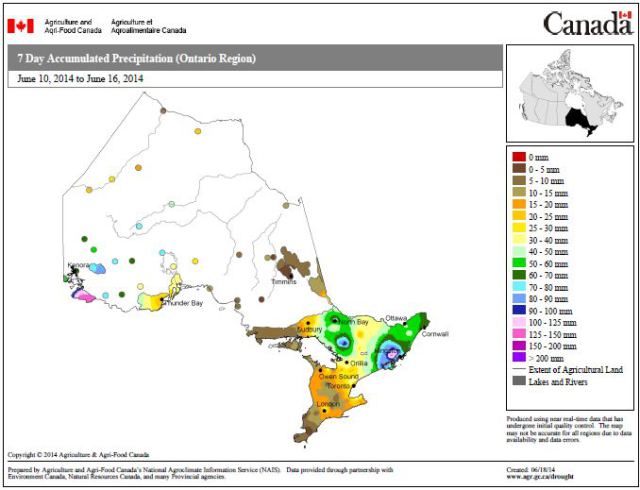
Figure 5: 7 Day Accumulated Precipitation, Ontario, June 10-June 16 (Source Agriculture and Agri-food Canada: http://www5.agr.gc.ca/resources/prod/doc/pfra/maps/nrt/2014/06/on_07_ac_s_e_140616.pdf)
To read the original article click here.
 Ontario Hop Growers' Association The OHGA is a not-for-profit association of hop growers, families and enthusiasts who are interested in supporting the growth of the hop industry in Ontario.
Ontario Hop Growers' Association The OHGA is a not-for-profit association of hop growers, families and enthusiasts who are interested in supporting the growth of the hop industry in Ontario.


